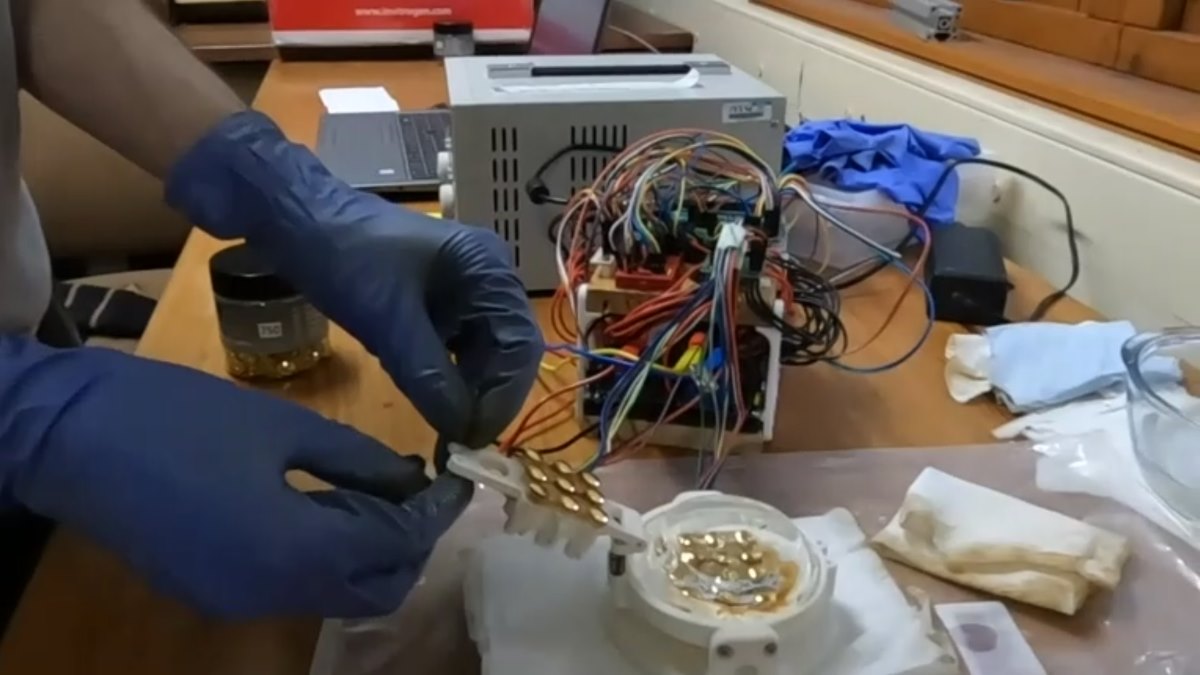A hydrogel learned to play the 1970s video game “Pong” and improved its ability to hit the ball by 10% with some practice.
Dr Hayashi, a biomedical engineer at the University of Reading in the UK, says: “Our research shows that even very simple materials can exhibit complex, adaptive behaviours normally associated with living systems or sophisticated AI.
“This opens up exciting possibilities for the development of novel ‘smart’ materials that can learn and adapt to their environment.”
The research is described in an article published in Cell Reports Physical Science.
An example run of a hydrogel during a game of Pong. Source: Cell Reports Physical Science/Strong et al.
What is a hydrogel?
Like gelatin or agar, a hydrogel consists of a three-dimensional network of polymers that become jelly-like when water is added.
The hydrogel in this study is an “ionic electroactive polymer” in which the medium surrounding the polymer matrix contains charged particles, in this case hydrogen ions.
As a result, it may deform when electrical current is applied.
When stimulated by an electric field, the hydrogen ions migrate, pulling water molecules with them, which leads to swelling in the affected areas.
“The time it takes for the hydrogel to shrink back is much longer than the time it takes for it to expand. This means that the next movement of the ions is influenced by their previous movement, which is something like a memory,” says lead author and robotics engineer at the University of Reading, Dr. Vincent Strong.
“The continued rearrangement of ions within the hydrogel is based on previous rearrangements within the hydrogel and dates back to its manufacture when it had a homogeneous ion distribution.”
The researchers took advantage of this property to teach the hydrogel how to play Pong.
How to play a hydrogel pong?
Pong is a simple two-dimensional game that simulates table tennis. Players control their racket by moving it vertically across the left or right side of the screen to hit the ball.
Connecting a hydrogel to an electrode array for playing Pong. Image credit: Cell Reports Physical Science/Strong et al.
In this case, the researchers connected the hydrogel to a virtual game environment using an electrode array. It controlled a racket on the left side of the game environment and the ball bounced off a stationary wall on the right side.
They used electrical stimulation to tell the hydrogel the position of the ball and measured the movement of ions within the hydrogel to determine the position of the racket.
“Over time, as the ball moves, the gel stores all the motion. And then the racket moves to accommodate the ball in the simulated environment,” says Strong.
“The ions move in a way that creates a memory of all movements over a period of time, and this ‘memory’ leads to improved performance.”
With increased experience, the hydrogel was able to hit the ball more often, resulting in longer rallies (the number of times the ball was hit before it missed).
The researchers plan to further explore the hydrogel’s “memory” by studying the underlying mechanisms and testing its ability to perform other tasks.

